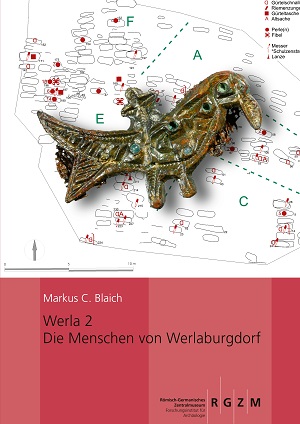
How to Cite
License

This work is licensed under a Creative Commons Attribution-ShareAlike 4.0 International License.
Published
Downloads
Werla 2: Die Menschen von Werlaburgdorf
Ein Beitrag zur Geschichte des Nordharzvorlandes im 8. bis 10. Jahrhundert
For northern Germany, the period of Charlemagne's Saxon Wars (772-804) was one of the most violent upheavals in its history. Over the next two centuries, the Harz foothills were transformed from a military outpost into the heartland of Ottonian royal power. The coronation of Heinrich I (919) and the election of his son Otto the Great (936-973) as his successor marked the end of this transformation. However, it is difficult to trace the changes in Saxon society on the basis of the available accounts and documents.
For this reason, the cemetery of Werlaburgdorf, with its approximately 260 inhumations, deserves special attention. It is the largest necropolis of its kind in the Brunswick region and has been almost completely excavated. It was in use between the mid 8th and mid 10th centuries. The associated settlement probably comprised a maximum of five to seven families or farmsteads. The combination of anthropological research (including age structure, sex ratio, infant mortality and disease burden) and archaeological analysis allows further conclusions to be drawn about the internal structure of the burial community and the possible occupation of several areas.
The cemetery of Werlaburgdorf is located in the immediate vicinity of the Werla-Palatinate, which was first mentioned in 926 - the analysis of the cemetery from a supra-regional perspective offers a very special view of the Werla-Palatinate and the consequences of its establishment for the rural population.






